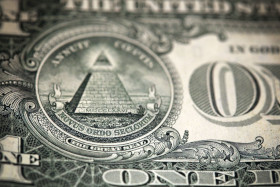The US dollar is sliding midweek as President Donald Trump continues to pressure the Federal Reserve cut interest rates because the economy would ascend âlike a rocket.â An influx of mixed data has also been coming out, showcasing some bright spots and some dim aspects that could be signs of a somewhat cooling economy.
On Tuesday, President Trump tweeted that the US central bank should consider reducing rates by as much as a full percentage point from its current range of between 2.25% and 2.5%. For if they did, Trump noted, the country âcould be setting major records.â
Our Federal Reserve has incessantly lifted interest rates, even though inflation is very low, and instituted a very big dose of quantitative tightening.
We have the potential to go up like a rocket if we did some lowering of rates, like one point ⦠with our wonderfully low inflation, we could be setting major records &, at the same time, make our National Debt start to look small!
Since entering the Oval Office, the Fed has raised rates several times, though the Eccles Building has hit the pause button in recent months. Recently, the Fed forecast just one rate hike in 2019 and zero rate hikes next year. It also lowered its estimates for US economic growth this year and the next.
Did the president influence the Fed? Many officials have come out and said the White House did not have a bearing on the Fedâs latest moves, arguing that it is an independent institution that does not take its orders from Washington. However, its 100-year history suggests something completely different.
The Fed will complete its two-day Federal Open Market Committee (FOMC) policy meeting on Wednesday. It is widely expected that the central bank will keep rates unchanged, notes the CME Group FedWatch tool. Interestingly enough, there is a growing number of economists who believe the central bank could slash rates over the coming months.
On the data front, the housing market is not getting a jolt, despite in the middle of the typically busy buying season. According to the Mortgage Bankers Association (MBA), mortgage application volume declined 4.3%, applications to refinance a home fell 5%, and mortgage applications to purchase a home tumbled 4%.
This comes one day after the S&P Case-Shiller Home Price Index rose by 0.2%, which is lower than the median estimate of 0.3%. Home sales in March soared 3.8%, beating the market forecast of 1.2% and is up from the previous monthâs 1% contraction.
Inflation remains muted as higher labor costs were complemented by rising housing prices in the first quarter. The Bureau of Labor Statistics (BLS) found that wages climbed 0.7%, benefits jumped 0.7%, and the overall Employment Cost Index edged up 0.7%.
Overall consumer confidence was higher than what the market had penciled in for April. The Conference Board Consumer Confidence improved to 129.2, up from Marchâs revised 124.2.
The USD/CAD currency pair dipped 0.08% to 1.3401, from an opening of 1.3389, at 12:27 GMT on Wednesday. The GBP/USD tumbled 0.25% to 1.3066, from an opening of 1.3034.
If you have any questions, comments, or opinions regarding the US Dollar, feel free to post them using the commentary form below.
